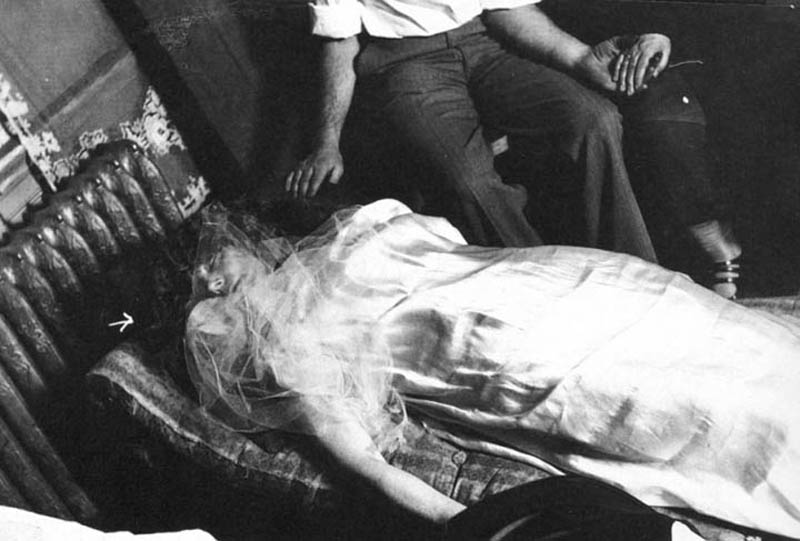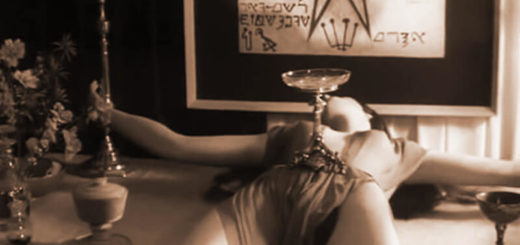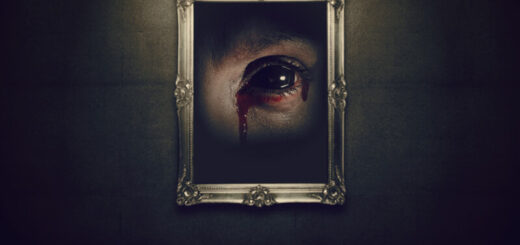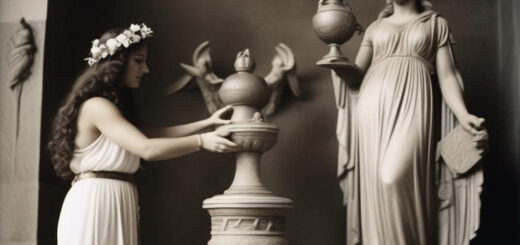Sex and Mediumship – quotations on the observation of ectoplasma
Nandor Fodor (May 13, 1895 in Beregszász, Hungary – May 17, 1964 in New York City, New York) was a British and American parapsychologist, psychoanalyst, author and journalist of Hungarian origin. The quotations below, mostly concern detailed observations of ectoplasma and its behaviour as described by several researchers. They were originally collected by Dr. Fodor in connection with a libel action brought by him against a spiritualist weekly, in England, March 1939. Though the verdict was favorable to Dr. Fodor, no opportunity was offered to present the Quotations in proof of his basic claims.

Ectoplasma appearing on medium
Crawford’s Psychic Structures…
I shall begin with W.J. Crawford, D.Sc., who was a lecturer in mechanical engineering at the Municipal Technical Institute of Belfast, and was author of several ‘classical’ works on spiritistic phenomena (“Reality of Psychic Phenomena“, “Experiments in Psychic Science“, “Hints and Observations“, “Psychic Structures at the Goligher Circle“). My first quotations are from the last named book, page 142 ff. The experiments were directed at finding out from what part of the medium’s body the plasma (ectoplasm) issued:
Page 147: “From what part of the medium’s body does the plasma issue, and does it return by the same or by another route?
“Now, I have discovered that plasma has the property of adhering strongly to a substance such as powdered carmine, and that if the carmine is placed in its path it will leave a colored track. For example, a slightly damp carmine may be placed on any part of the medium’s clothing in the vicinity of the part of her body whence the plasma is thought to issue, and the carmined path of the plasma, as it issues, will be left. / Arrangements can also be made to let the plasma rub over carmine on the floors and the track can be followed as the plasma returns to the body of the medium, by the trace left on the clothing.”
Page 151: (After describing in detail several experiments): “It is now becoming apparent to me that besides issuing from the medium’s foot inside her shoe, there were plasma paths up and down the leg… if carmine is put into the toes of the shoes, particles were found on the stockings right to the top. Crayon particles placed round the tops of the stockings had been considerably moved up and down.”
Pages 154-155: “The question then arose as to whether there was a flow if plasma from the medium’s body down the legs, as well as the flow from the feet upwards, or, indeed, whether the whole of the plasma did not come from the trunk of the medium, flow down the legs…
The medium put on white calico knickers under my wife’s supervision. Carmine powder was placed in her shoes. At the end of the seance it was found that there were carmine paths up to the top of both stockings and then inside the legs of the knickers to the join of the legs. The carmine was mostly up the front toward the inside of the legs, and left colored bands 2-3″ broad. / Thus, as I had suspected for some considerable time, it was abundantly clear that the plasma issued from and returned to the body of the medium by way of the trunk.”
Pages 156-157: “At the end of the seance the medium’s feet and legs were washed in order to remove the carmine on her skin which had come thru from her stockings. Clean stockings were put on her, and then her knickers were removed. The knickers were found to be heavily marked with carmine up the inside of both legs as before.
Experiment K-K: The medium sat in clean calico knickers and clean stockings. Carmine was placed in her shoes as before. / At the end of the seance it was found that the inside of the legs of the knickers were marked with carmine as far as the join of the legs… The above results show beyond a shadow of a doubt that the plasma, after being used in the production of phenomena, returns to the medium’s body via the trunk.”
Page 158: “…during interruptions in phenomena, or when a light is temporarily lit during a seance, the plasma conceals itself about the top of the medium’s legs under her clothing, and does not necessarily all return to her body.”
As will be seen, Crawford uses very careful language. Not once does he refer to the medium’s genitalia by open words. Figures at the end of the book show the plasma issuing from under the medium’s skirt.
For more plain speaking language let us go to the Continent. In “Experimente der Fernbewegung” (Experiments in Telekinesis) Baron Schrenck-Notzing quotes (p. 154) the following report by Dr. Olga Lebrecht-Thummel, a nerve specialist of Marburg:
“With the increase of phenomena the bodily movements became stronger, the clonic snakings became more powerful, cramplike; the pulse flew up and the respiration grew labored. Perspiration stood on the forehead of the medium. The whole process is very much like a birth process. Biologically, the erotic activity is unmistakeable. (1).
Dr. W. Osborne:
Report of Dr. W. Osborne, nerve specialist of Baden-Baden, page 163:
“Finally I could not fail to observe that all the phenomena produced by an effort on the part of the medium (she perspires often very strongly during the demonstration) point to happenings which hang together with the sexual sphere of the medium. It is difficult to make accurate observations in this respect, but the whole typical corporeal attitude of the medium during and before the phenomenon, the increase of the totality of bodily energies, the rhythm of his movements, his great general excitement which strives to reach a high point after the achievement of which the phenomena begin and the medium is visibly exhausted and satisfied, speak for the idea that these things somehow hang together with his sex?”
General Joseph Peter, of Munich:
Page 175 of Report. “The medium, as the phenomena were about to happen, was often in fear and excitement. Willie (Schneider) pressed himself trembling to me and groaned in anxiety. From time to time, however, it seemed that he was possessed by erotic feelings; he stroked the hands of his controls with his cheek and began to bite me in the arm. ‘Mina’ (his female controlling spirit) would only desist after very emphatic requests.”
Dr. Gustave Geley, “From the Unconscious to the Conscious”:
Page 67. “Thus the formations materialized in mediumistic seances arise from the same biological process as normal birth” / “Ectoplasm is linked to the medium by a channel of nourishment, a true umbilical cord, comparable to that which joins the embryo to the maternal body. In certain cases the materialized forms appear in an ovoid of the substance.”
Page 68: “I have also seen, on several occasions, a hand wrapped in a membrane closely resembling the placental membrane. The impression both to sight and touch was precisely that of a hand presentation in childbirth when the amnion is unbroken.” / “Another analogy with childbirth is that of pain. The moans and movements of the entranced medium remind one strangely of a woman in travail.”
Professor Enrico Morselli.
Psicologia e Spiritismo, Vol. I, page 105: “The mediumistic crisis is similar in every respect to the hysterical one. The obscuration of consciousness, the torpor of lethargy, the modifications in circulation and in respiration, the sighs, the yawns, the profuse perspiration, the tremblement, the muscular tension, contraction, the anaesthetic condition, the spasms of the pharynx, the spasmodic laughter, the ecstatic facial expressions, the photophobia, the hyperesthesia, the erotic attacks, the passionate outburst, the vocal and mimical stereotypes – nothing is missing from the frame with which neuropathologists and alienists are so well acquainted.”§
From the same work, Vol.II, page 14: “Lusapia says that even the menstruation has become more copious and more disordered in excessive mediumistic practise.”
Vol.II, page 307: “The passing into a more advanced state of trance, to that of active somnambulism, is truly indicated by sighs, yawns, sobs, alternating redness and pallor of the face, perspiration on the forehead, light transparency of the palms of the hands, the alteration of the voice and the quick change of facial expression. Eusapia then progresses through a diversity of emotional states; now she is prey to a species of concentrated rage, with quick movements, imperious commands, and sarcastic phrases directed at her critics, with smiles and loud laughter which (as De Rochas and Bois exaggeratedly describe it) is ‘something diabolical’; then she passes into a state of decided voluptuous ecstasy, throwing about both her arms, squeezing us with her tensed thighs and trembling feet, resting her head and abandoning her whole body on my or Barzini’s shoulders while we fearlessly resist this innocent attack against our masculine emotions.”
_______ _______
Round Robin Editor adds a further, perhaps unnecessary caveat to the foregoing account, that an immense amount of study has been devoted to the nature, forms and processes of the ectoplasm. Fragments of it have been detached, preserved for a short time, and an attempt made at chemical analysis. It contains a few epithelial cells. It may be white, gray, or black, infinitely plastic, or rigid as an iron bar. It is considered to be idioplastic, and can be produced and modified by suggestion and hypnosis. It is by no means derived exclusively from the genitalia, but from all openings of the body, from the armpits, perhaps from the breasts and solar plexus also… It was perhaps the knowledge of some of these facts that caused Houdini to deny that it existed at all; he declared that “God Almighty would never permit so horrible a substance to exist”… Ectoplasm is not drawn from the medium alone, but often from a half-dozen sitters as well; mediums who pack 15-20 people into a small room without ventilation, often for two hours of physical phenomena, should be prosecuted for offense against public health and decency. The excuse of “concentrating the power” is sheer nonsense… The phenomena associated with ectoplasm, however, are in all ways marvellous and their limits are unknown to us. (ML)
_______ _______
Aspirations of Dr. Yoakum:
We mean Dr. Gerald A. Yoakum, Professor of Education at the University of Pittsburgh. He’s grieved by the discovery that America’s reading habits are at the bubble-gum stage; it seems the army had to keep its G.I. instructions at fourth-grade level, to be sure they were understood. And the public, he says, wants sixth grade stuff, just something to read, no matter what. Love, sports, and Western magazines conform to this requirement pretty closely. The women’s magazines, however, are for the true intellectuals, “they average about half-way through the 7th grade.” Dr. Y’s conclusions are fanciful but intriguing: “The reading level of the nation must be raised to that of a 14-year-old child, or at least to where we can grasp the social and economic problems that confront us.” – and yet there are people who regard the afflictions of mankind as either gins laid by Satan or punishments sent by God!
Footnotes
§ Note (1): Some of the most vicious attacks ever made, upon mediums and investigators alike, have had origin in this apparent eroticism. The fondlings of (e.g.) an entranced peasant woman are alleged to have corrupted the wisest savants, and to have converted the darkened seance room into a scene of erotic orgies. (Ed)
§ Note (2): Inexperienced readers should not make the mistake of supposing that this alarming picture is characteristic of all materialization seances without exception. The phenomena may take place quietly, with only a few groans or gasps from the medium as he enters trance. The clonic spasm, alleged by some to be an invariable accompaniment of the ectoplasmic extrusions, if it exists at all, in such cases is undetectable by ordinary observation. (Ed.)
References:
Crawford, W J. The Reality of Psychic Phenomena, Raps, Levitations, Etc. New York: E.P. Dutton & Co, 1918. Print. [Digital: <https://archive.org/details/realityofpsychic00craw>]
Crawford, W J. Experiments in Psychical Science: Levitation, Contact, and the Direct Voice. New York: E.P. Dutton & Co, 1919. Print. [Digital: <https://archive.org/details/experimentsinpsy01craw>]
Crawford, W J. Hints and Observations for Those Investigating the Phenomena of Spiritualism. New York: E.P. Dutton & Co, 1918. Print. [Digital: <https://archive.org/details/hintsandobserva01crawgoog>]
Crawford, W J. The Psychic Structures at the Goligher Circle. London: J. M. Watkins, 1921. Print. [Digital: <https://archive.org/details/psychicstructure00craw>]
Schrenck-Notzing, Albert. Experimente Der Fernbewegung (Telekinese): Im Psychologischen Institut Der Münchener Universität Und Im Laboratorium Des Verfassers. Stuttgart: Union Deutsche Verlagsgesellschaft, 1924. Print.
Geley, Gustave, and Stanley De Brath. From the Unconscious to the Conscious. New York: Harper & Brothers, 1921. Print. <http://amzn.to/1jTr8vT> [Digital: <https://archive.org/details/FromTheUnconsciousToTheConscious>
Morselli, Enrico. Psicologia E Spiritismo: Impressioni E Note Critiche Sui Fenomeni Medianici Di Eusapia Paladino. Torino: Bocca, 1908. Print. [Digital: <https://archive.org/details/psicologiaespir01pallgoog>]
About Nandor Fodor

Nandor Fodor
Fodor was born in Beregszász, Hungary. He received a doctorate in law from the Royal Hungarian University of Science in Budapest. He moved to New York to work as a journalist and to Britain in 1929 where he worked for a newspaper company.
Fodor was one of the leading authorities on poltergeists, haunting and paranormal phenomena usually associated with mediumship. Fodor, who was at one time Sigmund Freud’s associate, wrote on subjects like prenatal development and dream interpretation, but is credited mostly for his magnum opus, Encyclopedia of Psychic Science, first published in 1934. Fodor was the London correspondent for the American Society for Psychical Research (1935-1939). He worked as an editor for the Psychoanalytic Review and was a member of the New York Academy of Sciences.
Fodor in the 1930s embraced paranormal phenomena but by the 1940s took a break from his previous work and advocated a psychoanalytic approach to psychic phenomena. He published skeptical newspaper articles on mediumship, which caused an opposition from spiritualists. Among the subjects he closely studied was the case of Gef the talking mongoose.
Poltergeists
Fodor pioneered the theory that poltergeists are external manifestations of conflicts within the subconscious mind rather than autonomous entities with minds of their own. He proposed that poltergeist disturbances are caused by human agents suffering from some form of emotional stress or tension and compared reports of poltergeist activity to hysterical conversion symptoms resulting from emotional tension of the subject.
In 1938, Fodor investigated the Thornton Heath poltergeist case that involved Mrs. Forbes. According to Rosemary Guiley “Fodor asserted that the psychosis was an episodic mental disturbance of schizophrenic character, and that Mrs. Forbes’ unconscious mind was responsible for the activities finally determined to be fraudulent. Fodor eventually identified the cause as sexual trauma that had occurred in Mrs. Forbes’s childhood, and had been repressed.” Because he was skeptical of the case, Fodor was heavily criticized by spiritualists and was dismissed from his post at the International Institute for Psychical Research. The spiritualist Arthur Findlay, who founded the institute, did not approve of his research and resigned. Fodor was attacked in the Spiritualist newspaper, Psychic News which he sued for libel.
Fodor published two scientific papers on poltergeist phenomena, The Psychoanalytic Approach to the Problems of Occultism (1945) and The Poltergeist, Psychoanalyzed (1948). “The poltergeist is not a ghost. It is a bundle of projected repressions,” he stated. With the psychical researcher Hereward Carrington Fodor co-authored Haunted People: Story of the Poltergeist down the Centuries (1951), the book which received positive reviews.
The psychologist Robert Baker and the skeptical investigator Joe Nickell wrote in most cases Fodor discovered that ghosts are “pure inventions of the hauntee’s subconscious” and praised Fodor’s book The Haunted Mind as vastly entertaining. However, Fodor’s belief that some poltergeist phenomena could be explained by psychokinesis has drawn criticism. Henry Gordon has stated that parapsychologists such as Fodor and William G. Roll took a speculative approach to the poltergeist subject, ignoring the rational explanation of deception in favour of a belief in the paranormal.
Prenatal psychology
Fodor’s work The Search for the Beloved (1949) has been described as an influential text in the field of prenatal psychology. Fodor believed that a pregnant mother could communicate telepathically with the mind and body of her unborn child. He held that the mother could cause physical and psychological events on her unborn child depending on her state of mind. Science writer Martin Gardner noted that although Fodor had contributed to respectable psychoanalytical journals his views on telepathy were pseudoscience.
Publications Books
Encyclopedia of Psychic Science. London: Arthurs Press, 1934.
These Mysterious People. London: Rider, 1936.
The Search for the Beloved: A Clinical Investigation of the Trauma of Birth and Pre-Natal Conditioning. New York: Hermitage Press, 1949.
Haunted People: The Story of the Poltergeist Down the Centuries. [with Hereward Carrington]. New York: Dutton, 1951.
New Approaches to Dream Interpretation. New York, 1951. Reprint, New Hyde Park, N.Y.: University Books, 1951.
On the Trail of the Poltergeist. New York: Citadel Press, 1958.
The Haunted Mind: A Psychoanalyst Looks at the Supernatural. New York: Garrett Publications, 1959.
Mind Over Space. New York: Citadel, 1962.
Freud: Dictionary of Psychoanalysis. Fawcett Premier, 1963.
Between Two Worlds. New York: Paperback Library, 1964.
The Unaccountable. New York: Award Books, 1968.
Freud, Jung, and Occultism. University Books, 1971.
Papers
Fodor, N. (1936) The Lajos Pap Experiments. International Institute for Psychical Research. Bulletin II.
Fodor, N. (1937) I Investigate Another Case of Haunting. Journal of the American Society for Psychical Research: 29.
Fodor, N. (1937) Mysterious Knockings. Journal of the American Society for Psychical Research: 189–90.
Fodor, N. (1939) The Ghost in Chelsea. Journal of the American Society for Psychical Research: 55.
Fodor, N. (1945) A Psychoanalytic Approach to the Problems of Occultism. Journal of Clinical Psychopathology and Psychotherapy, July: 69.
Fodor, N. (1945) The Lure of the Supernatural. Psychiatric Quarterly 20: 258.
Fodor, N. (1946). Sex and Mediumship. Round Robin 2: 11-14.
Fodor, N. (1947) Telepathy in Analysis. Psychiatric Quarterly 21: 171–89.
Fodor, N. (1948) The Poltergeist Psychoanalyzed. Psychiatric Quarterly 22: 195-203.
Fodor, N. (1949) I Psychoanalyze Ghosts. Mechanix Illustrated, September: 150.
Fodor, N. (1956) Was Harry Price a Fraud?. Tomorrow 4(2): 2.
You may also like to read:






